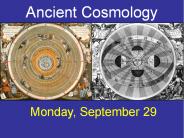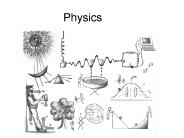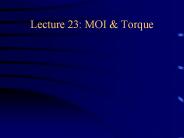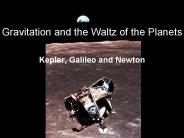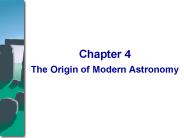Heliocentrism PowerPoint PPT Presentations
All Time
Recommended
AST 101 Lecture 6 Return to Heliocentrism
| PowerPoint PPT presentation | free to download
Lecture 3 Geocentrism vs. Heliocentrism Dennis Papadopoulos ASTR 340 Fall 2006 Aristotle s Universe Aristotle-Ptolemy and the Church ...
| PowerPoint PPT presentation | free to download
... (SETI) The Borderlands of Science Shermer, (2001) Heliocentrism, .9 Neurophysiology of Brain Function, .8 Punctuated equilibrium, .7 ...
| PowerPoint PPT presentation | free to view
Aristotle (384 BC 322 BC) Geocentrism. Heliocentrism. Copernicus (1473 1543) Heliocentrism ... 'Nothing exists until it is measured.' Quantum. Niels Bohr ...
| PowerPoint PPT presentation | free to view
Geocentrism & heliocentrism. The Caloric Theory of heat vs. the Kinetic & Theory of Heat ... Change from Ptolemy's geocentrism to Copernican heliocentrism. ...
| PowerPoint PPT presentation | free to view
... calculus and used a new measurement of the size of ... Principia confirmed work of Copernicus, Galileo, Kepler and heliocentrism. Fueled a surge in science ...
| PowerPoint PPT presentation | free to view
Title: PowerPoint Presentation Author: Eddie Guerra Last modified by: Astronomical Observatory Created Date: 5/29/2001 3:11:59 AM Document presentation format
| PowerPoint PPT presentation | free to download
Galileo Galilei was born February 15, 1564, in Italy near Pisa. The Leaning Tower had been completed for about 200 years. Shakespeare was born the same year ...
| PowerPoint PPT presentation | free to view
... Part Duex. Objectives: Define heliocentric, geoheliocentrism, parallax ... Tycho used parallax in an attempt to support his geoheliocentric model. Parallax ...
| PowerPoint PPT presentation | free to view
Scientists Contributions to Our Understanding of the Solar ... Source of photo, which is in ... Copernicus Improved the telescope to view objects in sky For images ...
| PowerPoint PPT presentation | free to view
THE SCIENTIFIC REVOLUTION Toward the modern worldview
| PowerPoint PPT presentation | free to view
Moon, Sun, planets, between Earth & stars. Stars affixed to ... Planets usually move west to east, but sometimes east to west (retrograde), relative to stars. ...
| PowerPoint PPT presentation | free to download
From the Earth-centered to the Sun-centered Model Tuesday, January 8 Ptolemy s explanation of retrograde motion: Phases of the Moon: The Moon is an ...
| PowerPoint PPT presentation | free to download
Modern European History I HIS-106 Unit 7 - The Scientific Revolution
| PowerPoint PPT presentation | free to view
The Ordered Universe. The Birth of Modern Astronomy (Trefil & Hazen, The Sciences, Ch 2) ... Chinese, Polynesians, Arabs. Islamic influences in Spain 10-12th C ...
| PowerPoint PPT presentation | free to view
Falling weights (a 2 pound ball ... The Inquisition's Judgement--1633 ... was badly defeated, but the seeds of reliance on scientific inquiry were planted. ...
| PowerPoint PPT presentation | free to view
Click here for credits. Ptolemy. Ptolemy was an astronomer and mathematician. ... Highlight 'Almagest' : AD 120 states Earth is the center of the solar system, ...
| PowerPoint PPT presentation | free to view
Physics Henry Cavendish Experimented with electricity Tested the electric current by giving himself shocks and noting the pain he felt In 1747, Henry Cavendish ...
| PowerPoint PPT presentation | free to download
Lecture 16: The Beginnings of Modern Science and Philosophy * * * * * * * * * * * * * * * * * * * * * * * * * III. RENAISSANCE SCIENCE H. Isaac Newton Science and ...
| PowerPoint PPT presentation | free to download
Relied on Eastern knowledge (Persia, India,...) Predict eclipses (Thales, 585 BC) Sizes of earth, moon, the zodiac to within 1% Size of sun : Aristarkos 180 times ...
| PowerPoint PPT presentation | free to download
American, French, and Haitian Revolutions ... nations, exiled, returned for 100 days, finally defeated at Waterloo, in Belgium ... Pan Slavism ...
| PowerPoint PPT presentation | free to view
From scholasticism to empiricism. Bacon, Royal Society, Academie des Sciences. Ancient 'Problem' ... Demise of Scholasticism and rise of empiricism ...
| PowerPoint PPT presentation | free to view
Mars is a planet. Mars moves in ellipses ... Words can betray the thoughts that they are used to express. Idols of the Theatre ...
| PowerPoint PPT presentation | free to view
Chapter 2: The Copernican Revolution The Birth of Modern Science Ancient Astronomy Models of the Solar System Laws of Planetary Motion Newton s Laws
| PowerPoint PPT presentation | free to download
EARTH SCIENCE Geology, the Environment and the Universe Chapter 28: Our Solar System
| PowerPoint PPT presentation | free to download
Ideas in Conflict: Geocentric vs. Heliocentric Model ... Part III: Light and Telescopes Lambert E. Murray, Ph.D. Professor of Physics
| PowerPoint PPT presentation | free to view
Ideas in Conflict: Geocentric vs. Heliocentric Model ... Part II: Historical Development of Astronomy Lambert E. Murray, Ph.D. Professor of Physics
| PowerPoint PPT presentation | free to view
Chapter 2 The Solar System Section 1 Observing the Solar System
| PowerPoint PPT presentation | free to view
these two theory create a problem for astronomers
| PowerPoint PPT presentation | free to download
A Foucault pendulum is said to prove the rotation of the earth ... So the sun stood still in the midst of heaven, and hasted not to go down about a ...
| PowerPoint PPT presentation | free to download
Title: Volcanoes and Igneous Activity Earth - Chapter 4 Author: Stan & Cindy Hatfield Last modified by: Elizabeth Bartels Created Date: 12/18/2000 12:31:17 AM
| PowerPoint PPT presentation | free to view
History of Astronomy Views of the Solar System
| PowerPoint PPT presentation | free to view
The Nature of Our Solar System
| PowerPoint PPT presentation | free to view
OUR UNIVERSE Lectures 4 - 6 WEEK 2 Conjunction: The Earth, Sun and a Planet form a straight line in the direction of the Sun (as seen from the Earth) Opposition: The ...
| PowerPoint PPT presentation | free to download
Lecture 23: MOI & Torque
| PowerPoint PPT presentation | free to download
... astrology is at odds with astronomy Proof The positions of stars and constellations have changed since ancient times; astrology does not ... India, Arabia Greeks ...
| PowerPoint PPT presentation | free to download
The Scientific Revolution The Scientific Method By the early 1600s, a new approach to science had emerged, known as the Scientific Method. Unlike earlier approaches ...
| PowerPoint PPT presentation | free to view
... human lives are in reality nothing more than physical interactions among minute ... Canon Contents (1) Babylonian Kings, 747-539 BC, (2) Persian Kings ...
| PowerPoint PPT presentation | free to view
Title: PowerPoint Presentation Last modified by: Windows User Created Date: 1/1/1601 12:00:00 AM Document presentation format: On-screen Show (4:3)
| PowerPoint PPT presentation | free to download
Renaissance and Reformation World History Define Renaissance Renaissance Rebirth of classical ideas. The Renaissance was a time of creativity and change in many ...
| PowerPoint PPT presentation | free to view
The Nature of Our Solar System Umbra Penumbra Penumbra Umbra Penumbra Penumbra Total Eclipse of the Sun Partial eclipse the view outside the penumbra Spectators ...
| PowerPoint PPT presentation | free to view
Observing the Solar System The Sun The Inner Planets The Outer Planets Comets, Asteroids, and Meteors Is There Life Beyond Earth? ...
| PowerPoint PPT presentation | free to view
The Nature of Our Solar System ...
| PowerPoint PPT presentation | free to download
Bell Work Wednesday 2/25 Look in your book beginning on page 623 to find the answers 1. What is the difference between the geocentric and heliocentric theory?
| PowerPoint PPT presentation | free to download
The Scientific Revolution * Andreas Vesalius pioneered the modern study of anatomy and wrote the first complete anatomy text, On the Fabric of the Human Body (De ...
| PowerPoint PPT presentation | free to view
Chapter 2: The Copernican Revolution The Birth of Modern Science Ancient Astronomy Models of the Solar System Laws of Planetary Motion Newton s Laws
| PowerPoint PPT presentation | free to download
Gravitation and the Waltz of the Planets Kepler, Galileo and Newton
| PowerPoint PPT presentation | free to download
Ideas in Conflict: Geocentric vs. Heliocentric Model ... Part V: The Moon, Our Nearest Neighbor Lambert E. Murray, Ph.D. Professor of Physics
| PowerPoint PPT presentation | free to view
CHAPTER 2: Gravitation and the Waltz of the Planets
| PowerPoint PPT presentation | free to download
Chapter 4 The Origin of Modern Astronomy * * * Major Discoveries of Galileo (2) Surface structures on the moon; first estimates of the height of mountains on the moon ...
| PowerPoint PPT presentation | free to download
CHAPTER 2: Gravitation and the Waltz of the Planets
| PowerPoint PPT presentation | free to download
The Scientific Revolution Drawings done by Vesalius William Harvey An English scholar who described the circulation of blood for the first time.
| PowerPoint PPT presentation | free to view
The Scientific Revolution
| PowerPoint PPT presentation | free to download
Scientific Revolution One person or institution can have a great influence on the course of events. When should one question authority?
| PowerPoint PPT presentation | free to view
Title: Our Solar System Author: Connie Campbell Last modified by: Aaronette Alleyne Created Date: 2/15/2004 2:00:51 PM Document presentation format
| PowerPoint PPT presentation | free to download
University of San Francisco Modern Physics for Frommies II The Universe of Schr dinger s Cat Lecture 1
| PowerPoint PPT presentation | free to view












